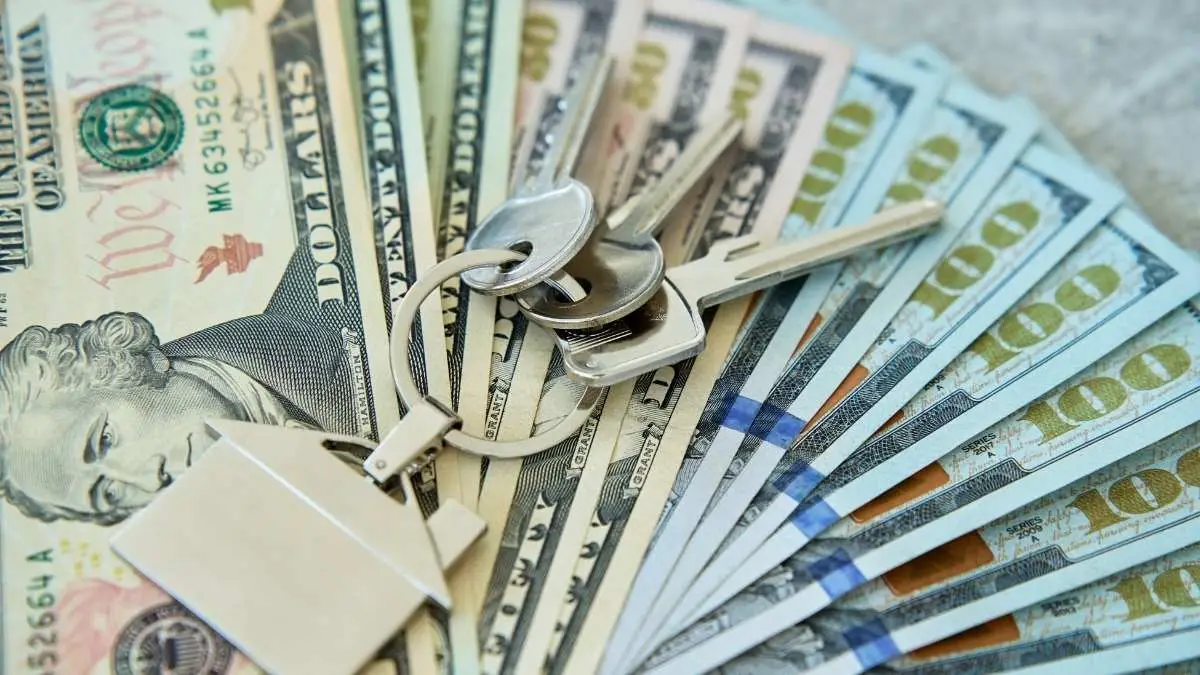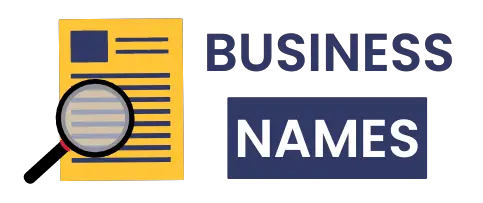The financial advice you’ve been fed is designed to keep you running in place. You follow the rules, save a little, and chase a bigger salary, yet true financial freedom remains a distant, hazy mirage.
The system is built on a myth: that wealth is a complex game reserved for the intellectually gifted. This is a lie. Building life-altering wealth has almost nothing to do with your IQ and everything to do with your psychology.
It demands a series of uncomfortable, counter-cultural choices that your friends and family will likely question. This is not another list of budgeting tips; it’s a manual for rewiring your mindset.
It’s about facing the raw, unfiltered truths that separate the perpetually stressed from the profoundly free.
1. Your Financial Success is Determined by Your Psychology, Not Your Intelligence

The most pervasive myth in personal finance is that wealth is the domain of the intellectually gifted—the stock market savants and financial wizards who possess arcane knowledge.
The uncomfortable truth is that financial success is overwhelmingly a soft skill. It is a test of character, not a test of intelligence.
Temperament, discipline, and emotional regulation are the true determinants of wealth, far outweighing one’s IQ or the complexity of their investment strategy.
This principle is a cornerstone of modern financial philosophy. Author Morgan Housel posits that finance is not the study of markets; it is the study of how people behave with money.
His observation that “a genius who loses control of their emotions can be a financial disaster… Ordinary folks with no financial education can be wealthy if they have a handful of behavioural skills” is not just an aphorism; it is a diagnosis of why so many people with high incomes fail to build lasting wealth.
This is reinforced by financial expert Dave Ramsey’s well-known formula: “Winning at money is 80 percent behavior and 20 percent head knowledge”.9
The academic field of behavioral finance provides the scientific underpinning for these observations. It demonstrates that investors are not the rational actors that classical economic theory presumes.
Instead, they are subject to a host of cognitive biases—such as overconfidence in their own abilities, herd mentality during market manias, and loss aversion during downturns—that lead to systematically irrational and costly decisions.
The entire financial media and marketing apparatus is, in many ways, engineered to exploit these psychological flaws, encouraging constant action, trading, and emotional response where patience and inaction are often the most profitable strategies.
At the heart of the requisite financial behavior is the psychological capacity for delayed gratification. The famous Stanford Marshmallow Experiment, in which children were offered one marshmallow immediately or two if they could wait 15 minutes, serves as a powerful metaphor for financial life.
The children who could resist the immediate, smaller reward demonstrated better life outcomes years later, including higher academic performance and better financial health.
This ability to endure short-term temptation (spending today) for a larger, more significant future reward (financial freedom) is the core psychological muscle that must be developed.
Therefore, the journey to wealth does not begin with learning about asset allocation; it begins with mastering one’s own impulses. It is an internal battle against our own wiring before it is an external one against the markets.
2. Your Salary Will Not Make You Rich; Your Savings Rate Will

The second uncomfortable truth directly confronts the most common excuse for a lack of financial progress: “I don’t earn enough.” While a higher income is certainly helpful, it is not the primary driver of wealth accumulation.
The true engine of financial acceleration is one’s savings rate—the percentage of after-tax income that is saved and invested. This single metric is a more powerful predictor of one’s timeline to financial independence than their absolute income.
The logic is simple but profound. A person earning $200,000 per year who spends $180,000 has a savings rate of 10%. A person earning $60,000 who spends $30,000 has a savings rate of 50%.
Despite the vast income disparity, the second individual will reach financial independence decades earlier.
This is because the savings rate simultaneously dictates two critical variables: the amount of capital being added to the investment portfolio each year and the ultimate size of the portfolio needed.
Someone spending $30,000 a year requires a much smaller nest egg to achieve freedom than someone spending $180,000. The statement, “Your salary alone can never make you financially independent,” is a direct acknowledgment of this reality.
Without a disciplined savings rate, higher income is often consumed by lifestyle inflation—the tendency for spending to increase as income rises, effectively neutralizing the financial benefit of a raise or promotion.
The Financial Independence, Retire Early (FIRE) movement codifies this principle into a mathematical framework.
Its central goal is to accumulate approximately 25 times one’s annual expenses in invested assets, a target known as the “FIRE Number”. Once this number is reached, one can theoretically withdraw 4% of the portfolio annually to cover living expenses without depleting the principal over a 30-year period.
The timeline to reach this number is almost exclusively a function of the savings rate, as illustrated in the table below.
| Savings Rate (%) | Years of Work to Fund 1 Year of Expenses | Years to Reach Financial Independence (25x Expenses) |
| 10% | 9.0 | 51.0 |
| 15% | 5.7 | 36.6 |
| 25% | 3.0 | 22.9 |
| 40% | 1.5 | 14.7 |
| 50% | 1.0 | 11.6 |
| 60% | 0.7 | 9.0 |
| 75% | 0.3 | 5.7 |
| (Note: Calculations assume a 5% real return on investments and do not account for existing savings.) |
The data in this table is stark. A person saving 10% of their income must work for nine years just to save enough to cover one year of their own living expenses. In contrast, someone saving 50% achieves the same feat in a single year.
This mathematical reality stands in shocking contrast to the economic behavior of the average American, whose personal savings rate of 4.4% puts them on a timeline to financial independence that is effectively infinite.
This truth is uncomfortable because it removes external excuses and places the responsibility squarely on individual choice. It’s not about the salary the boss provides; it’s about the discipline one imposes on their own spending.
3. You Must Treat Debt Like a House Fire

The modern financial system has masterfully normalized debt, rebranding it from a dangerous burden into a convenient tool. Car loans, credit cards, and “buy now, pay later” services are marketed as enablers of a better lifestyle.
The uncomfortable truth is that high-interest consumer debt is not a tool; it is a wealth-destroying emergency. It is a house fire that silently consumes one’s financial future, and it must be extinguished with the same urgency.
While investments in assets like stocks or real estate are designed to compound for you, high-interest debt is a malevolent mirror image, compounding against you at rates that often exceed any reasonable investment return.
A credit card with an 18% interest rate is an “anti-investment” that guarantees an 18% loss annually on the outstanding balance.
As Warren Buffett, a master of making interest work for him, has stated, “If I borrowed money at 18% or 20%, I’d be broke”.
Dave Ramsey’s assertion that “The borrower truly is slave to the lender” is not hyperbole; it is a mathematical description of the cash flow relationship.
The existence of such debt makes a high savings rate—the cornerstone of accelerated wealth-building—an impossibility.
A $500 monthly payment toward a car loan and a $300 minimum payment on credit cards represent $9,600 per year that is vaporized before it can ever be saved or invested.
This is why prioritizing the elimination of high-interest debt is a non-negotiable first step, preceding even aggressive investing.
The most effective strategy for extinguishing this fire is the “debt avalanche” method. This involves making minimum payments on all debts while directing every available dollar to the debt with the highest interest rate.
Once that debt is eliminated, the full payment amount is “snowballed” onto the debt with the next-highest interest rate, and so on. This approach is the most mathematically efficient, minimizing the total interest paid over time.
An alternative, the “debt snowball” method, involves paying off the smallest balances first to create psychological momentum, which can also be effective.
Regardless of the method, the mindset must be one of emergency response. Eliminating debt is not merely about reaching a net worth of zero; it is the critical act of unchaining the future cash flow required to build real wealth.
4. You Must Save an Amount That Makes Your Friends Uncomfortable

Achieving a savings rate of 40%, 50%, or even higher—the level required for accelerated wealth—is not possible through minor tweaks and clever budgeting hacks.
It demands a lifestyle that is fundamentally different from the societal norm of consumption. This truth is uncomfortable because it forces a confrontation with social pressure and the deeply ingrained habit of “keeping up with the Joneses.”
It requires moving beyond the popular 50/30/20 budget (50% needs, 30% wants, 20% savings) and adopting a far more aggressive posture toward saving.
This is the realm of strategic frugality, which is not about deprivation but about radical intentionality. It involves a conscious and ruthless evaluation of every expense, guided by a clear understanding of its true long-term cost.
The research on individuals who have successfully built wealth from modest incomes reveals a consistent pattern of behavior:
- Elimination of Major Liabilities: They systematically avoid car payments by buying reliable, used vehicles with cash. This single decision can free up hundreds of dollars per month.
- Mastery of the Mundane: They cook the vast majority of their meals at home, minimizing one of the largest discretionary spending categories. They learn to find joy and skill in providing for themselves.
- Subscription Pruning: They aggressively cut recurring monthly expenses for services that provide marginal value, from streaming platforms to premium cell phone plans.
- Behavioral Defense: They actively resist the “dopamine rush of spending” by implementing systems like tracking their net worth weekly, which shifts the source of satisfaction from consumption to accumulation.
This approach is best encapsulated by the philosophy of Paula Pant of “Afford Anything”: “You can’t afford everything. But you can afford anything”.
This powerful reframe transforms frugality from a practice of saying “no” to everything into a practice of saying a profound “yes” to the few things that truly matter.
It means one might live in a modest apartment and drive a 10-year-old car in order to afford a year of world travel or the freedom to leave a job they despise.
To fully internalize the impact of these choices, it is essential to calculate the true cost of recurring habits. By viewing every expense through the lens of the 4% rule, its long-term burden becomes shockingly clear.
| Habit/Expense | Monthly Cost | Annual Cost | “Retirement Capital” Needed to Fund This Habit (Annual Cost x 25) |
| Daily $5 Latte | $150 | $1,800 | $45,000 |
| $400 Car Payment | $400 | $4,800 | $120,000 |
| $150 Cable/Streaming Pkg. | $150 | $1,800 | $45,000 |
| $200/mo Eating Out | $200 | $2,400 | $60,000 |
| (Note: Calculations based on the 25x expenses rule for financial independence.5) |
This table reframes a simple spending decision into a major life choice. That $400 monthly car payment does not just cost $400 today; it costs $120,000 in required retirement assets.
It is the equivalent of needing to work several additional years to fund that single convenience. When faced with this stark reality, the choice to drive a more modest car or brew coffee at home ceases to be a sacrifice and becomes a strategic trade for years of one’s life.
5. Your Biggest Expense Must Become Your Biggest Asset

For the vast majority of households, the single largest line item in their budget is housing. Month after month, this expense acts as a massive drag on their ability to save.
The most powerful and transformative financial move one can make is to invert this dynamic—to turn their largest liability into their largest income-producing asset. This is achieved through the strategy of “house hacking.”
In its classic form, house hacking involves purchasing a small multi-unit property (a duplex, triplex, or four-plex), living in one of the units as a primary residence, and renting out the remaining units to tenants.
The goal is for the rental income generated by the other units to cover most, if not all, of the property’s total monthly expenses, including the mortgage, taxes, insurance, and maintenance.
A successful house hack can effectively eliminate one’s personal housing cost, instantly freeing up 25-35% of their income to be redirected toward savings and investments.
The power of this strategy lies in a unique convergence of real estate and financing rules. Because the buyer is occupying one of the units, they can qualify for favorable owner-occupant loans, such as an FHA loan, which may require a down payment as low as 3.5%.
This is a stark contrast to traditional investment properties, which typically require a down payment of 20-25%. This provision makes real estate investing accessible to individuals with modest savings.
Furthermore, the owner is building equity in an appreciating asset using rent paid by their tenants, a powerful form of financial leverage.
The financial impact is best illustrated with a concrete example. Consider the choice between renting a typical apartment and house hacking a duplex.
| Expense Item | Cost as Renter ($1,500/mo) | Cost as House Hacker (Owner of $400k Duplex) |
| Rent / Mortgage (P&I) | $1,500 | $2,150 |
| Property Taxes & Insurance | $0 | $500 |
| Maintenance & Vacancy (Est. 10% of rent) | $0 | $175 |
| Utilities (Owner’s portion) | $150 | $150 |
| Rental Income (from 2nd unit) | $0 | ($1,750) |
| TOTAL MONTHLY HOUSING COST | $1,650 | $1,225 |
| (Note: House hacker scenario assumes a $400,000 duplex purchased with a 5% down payment on a 30-year mortgage at 7% interest. Rental income and expenses are illustrative.) |
In this conservative scenario, the house hacker’s monthly housing cost is $425 less than the renter’s.
This $425, which can now be invested, is only part of the benefit. The house hacker is also building approximately $400 in equity each month from their mortgage payment (a form of forced savings) and benefiting from the long-term appreciation of a $400,000 asset.
This single, uncomfortable action—becoming a live-in landlord—completely changes one’s financial trajectory, transforming a perpetual expense into a wealth-generation machine.
6. You Must Build a Second Paycheck While You Still Have the First

Attempting to achieve a 50% savings rate on a single, average salary is an exercise in extreme, and for many, unsustainable, austerity.
While radical frugality is a necessary component, the equation is fundamentally altered by increasing the income side.
The uncomfortable truth for those seeking accelerated wealth is that a side hustle is not a luxury or a hobby; it is a mandatory component of the financial engine. It is the fuel that makes a hyper-aggressive savings rate not just possible, but manageable.
The strategic purpose of a side hustle in this framework is not simply to generate “extra” spending money. It is to create a distinct income stream that can cover a significant portion—or even all—of one’s living expenses.
This allows the primary salary from a 9-to-5 job to be almost entirely dedicated to savings and investments.
This separation of income streams is a powerful psychological and practical tool for wealth acceleration.
This strategy is no longer a fringe concept; it is a mainstream economic reality. In 2025, an estimated 41% of U.S. consumers earn income from a side hustle. The financial impact is significant, with the average side hustler earning an additional $891 per month.
For younger generations, this trend is even more pronounced. For Gen Z consumers with a side gig, that work accounts for a remarkable 57% of their total income, demonstrating a fundamental shift away from reliance on a single employer.
The most effective side hustles are often those that leverage existing skills or can be scaled with technology.
High-paying examples include freelance work in fields like motion graphics ($53/hour), web development ($52/hour), or content creation and writing ($42/hour)—rates that are substantially higher than the national average hourly wage.
By dedicating 5-10 hours per week to such a venture, an individual can generate an additional $1,000-$2,000 per month, turbocharging their savings rate and dramatically shortening their timeline to financial independence.
The rise of the side hustle economy is a direct response to the inadequacy of the traditional career path for wealth creation. It signifies a crucial evolution in personal finance, from being a passive employee to becoming the active CEO of one’s own diversified income statement.
7. The Stock Market is a Get-Rich-Slow Scheme (And That’s Why It Works)

In a culture saturated with stories of overnight crypto millionaires and speculative stock frenzies, the most uncomfortable truth about investing is its profound simplicity and “boring” nature.
The stock market is not a casino for getting rich quick; it is a powerful, reliable machine for getting rich slow.
True, lasting wealth is built not by timing the market or picking the next hot stock, but by patiently and consistently participating in the broad growth of the economy over decades.
This philosophy is the bedrock of Warren Buffett’s legendary success. His teachings emphasize patience, a long-term perspective, and emotional detachment from short-term market noise.
Core tenets like, “The stock market is designed to transfer money from the Active to the Patient,” and, “Our favourite holding period is forever,” are not folksy sayings but iron laws of wealth creation.
The goal is not to outsmart the market but to harness its power through unwavering participation.
Buffett’s famous advice to “be fearful when others are greedy and greedy when others are fearful” is a directive to act as a disciplined contrarian, buying when assets are on sale (during market panics) and exercising caution when they are expensive (during market euphoria).
For the vast majority of investors, the most effective way to implement this strategy is through low-cost, broad-market index funds or exchange-traded funds (ETFs), such as those that track the S&P 500.
These instruments provide instant diversification across hundreds of the largest U.S. companies, eliminating the uncompensated risk of individual stock picking and minimizing fees that erode returns over time.
The historical data provides a compelling case for this patient approach. Over the long term, the S&P 500 has delivered an average annual return of approximately 10-12%.
While returns in any single year can be wildly volatile—ranging from a gain of 31.49% in 2019 to a loss of 18.11% in 2022—the persistent upward trend over decades is undeniable.
The simplicity of this “buy and hold” strategy is its greatest psychological challenge. Investors, driven by the behavioral biases of action and overconfidence, consistently underperform the very market they are trying to beat by trading too frequently.
The uncomfortable truth is that the most profitable investment action is often sustained inaction. Success is found by creating a simple, automated system of regular investment and then cultivating the immense discipline to leave it alone for decades.
8. You Must Stop Trading Your Time for Money and Start Buying It Back

In the initial stages of wealth building, the primary transaction is trading time for money—through a primary job and a side hustle.
However, as income and net worth begin to grow, a critical inflection point is reached where the most valuable and constrained resource is no longer capital, but time.
The truly wealthy understand this shift and begin to use their money not just for consumption or investment, but to strategically buy back their own time, which can then be redeployed into higher-value activities.
This advanced strategy requires a fundamental mindset shift from that of a saver to that of a CEO of “You, Inc.” It begins with a simple calculation proposed by entrepreneur Dan Martell: the “Buyback Rate.”
To find this rate, one takes their annual income, divides it by 2,000 (a rough estimate of annual working hours), and then divides that hourly rate by four. The resulting figure is the maximum hourly rate one should pay to outsource a task.
For example, an individual earning $140,000 per year has an effective hourly rate of $70. Their Buyback Rate is $17.50/hour. The rule is simple: any task that can be delegated for less than $17.50/hour should be delegated.
This framework provides a logical, data-driven approach to outsourcing. The process follows a three-step “Buyback Loop”:
Audit: Conduct a thorough audit of one’s time and energy, identifying all the low-value, draining tasks that occupy the calendar. This can range from house cleaning and laundry to grocery shopping and basic administrative work.
Transfer: Systematically delegate these tasks. This could involve hiring a monthly cleaning service, using a wash-and-fold laundry service, signing up for grocery delivery, or hiring a virtual assistant for a few hours a week to manage email and scheduling.
Fill: With hours of time freed up each week, one must intentionally fill that new space with high-value, energizing activities. This could be scaling a business, learning a new skill that increases earning potential, spending quality time with family to prevent burnout, or engaging in strategic thinking and planning.
This is not about luxury; it is about leverage. By using money to buy back time from low-value tasks, one liberates the cognitive and physical energy required for higher-level work.
This creates a powerful, accelerating flywheel where the freed-up time generates more income, which can then be used to buy back even more time, leading to exponential growth in both wealth and personal freedom.
9. You Must Seek Asymmetry: Risk a Little to Win a Lot

After establishing a secure financial base through aggressive saving and patient, diversified investing, the final acceleration lever involves moving beyond conventional risk management into the realm of strategic, asymmetric bets.
This sophisticated approach directly challenges the timid, risk-averse posture of traditional financial advice.
The uncomfortable truth is that while the majority of one’s portfolio should be dedicated to safe, predictable growth, a small, disciplined allocation to opportunities with asymmetric risk profiles can create life-altering returns.
An asymmetric risk is an opportunity where the potential upside is exponentially greater than the limited, defined downside.
It is the principle of risking a small amount of capital for the chance of a disproportionately large gain. In simple terms, it is making a bet where one can lose only 1x their investment but has a plausible chance of making 10x, 50x, or even 100x.
This is not reckless gambling; it is a calculated strategy employed by the most sophisticated investors to capture outsized growth without jeopardizing their core wealth.
The key to implementing this strategy responsibly is strict capital allocation. A common framework involves dedicating a small, fixed portion of the investment portfolio—typically no more than 5%—to these higher-risk opportunities.
The remaining 95% stays in the “safe” portfolio of broad-market index funds. This structure ensures that even if every single asymmetric bet fails and goes to zero, the total portfolio only experiences a minor, manageable 5% drawdown.
However, if just one of these bets succeeds spectacularly, it can have a significant positive impact on the entire net worth, potentially shortening the timeline to financial independence by years.
Real-world examples of asymmetric opportunities include:
Angel Investing: Making a small investment in an early-stage startup with high growth potential.
Entrepreneurship: Starting a scalable business with low initial capital requirements, such as an e-commerce store or a software product.
Speculative Assets: Allocating a tiny fraction of the portfolio to a new technology or asset class with the potential for explosive growth.
This approach reframes risk. Instead of avoiding it entirely, one actively seeks out opportunities with the most favorable asymmetry.
It is a disciplined method for courting positive black swan events—rare, high-impact occurrences that are impossible to predict but can be positioned for.
By risking an amount so small that its total loss is inconsequential to the overall financial plan, one gains exposure to a class of returns that are simply unavailable through traditional, conservative investing.
10. The Compound Effect is a Force of Nature; You Decide if It Builds or Destroys

The extraordinary financial outcome—a multi-million dollar net worth built from a modest salary—is not the result of a single, brilliant decision or a lucky break.
It is the slow, silent, and inevitable result of small, seemingly insignificant choices repeated with relentless consistency over two decades.
This is the power of the Compound Effect, a force as reliable and unforgiving as gravity.
Author Darren Hardy defines the principle with a simple formula: Small, Smart Choices + Consistency + Time = Radical Difference.
This force is always at work, either for you or against you. Small, positive habits, like saving an extra $100 a month or reading 10 pages of a book daily, compound into massive success over time.
Conversely, small, negative habits, like a daily soda or mindlessly scrolling on social media, compound into failure and regret. The choices themselves are mundane; their cumulative power is miraculous.
The famous “doubling penny” parable perfectly illustrates the deceptive nature of compounding. A single penny that doubles in value every day for 31 days becomes worth over $10 million.
However, the journey is profoundly back-loaded. On day 15, the penny is worth a mere $163.84. By day 20, it is still only $5,243. The vast majority of the gain—over $10 million—materializes in the final days.
This explains why the first decade of saving and investing often feels like a slow, arduous grind with little to show for it. The results are invisible at first.
This lack of immediate feedback is the greatest psychological challenge to harnessing the Compound Effect. Human beings are wired for instant gratification, but compounding delivers its rewards on a geological timescale.
This is why most people quit. They make good choices for a few weeks or months, see no discernible change, and conclude that their efforts are futile. The uncomfortable truth is that one must have unwavering faith in the process.
One must continue to make the small, smart choices every single day, especially when it feels pointless, trusting that the mathematical certainty of compounding is at work beneath the surface.
Each of the preceding truths is merely a “small, smart choice” in this framework:
- The choice to automate a $200 investment each month.21
- The choice to spend an evening researching a house hacking opportunity instead of watching TV.29
- The choice to spend an extra hour on a side hustle instead of sleeping in.35
These are the simple, daily disciplines that, when compounded over years, create a result that looks to the outside world like an “overnight success.”
11. Financial Independence is the Byproduct, Not the Goal

The final and most profound uncomfortable truth is a paradox: the relentless pursuit of a net worth number is often a hollow and unsustainable endeavor.
The true purpose of building wealth is not the accumulation of money itself, but the purchase of one thing: freedom. Financial independence is the byproduct of a life lived with intention; it is not the ultimate goal.
Morgan Housel captures this sentiment perfectly: “Money’s greatest intrinsic value—and this can’t be overstated—is its ability to give you control over your time”.
This is the highest dividend that money pays. It is the ability to wake up in the morning and have agency over one’s day, to choose the work one does, the people one associates with, and the way one spends their limited hours on this earth.
This is the distinction between being rich (having a high income or net worth) and being wealthy (having control over one’s time).
This Why Power, as Darren Hardy calls it, is the essential fuel for the entire journey.
The sacrifices required by the preceding truths—the extreme savings rate, the discomfort of being a landlord, the long hours on a side hustle—are only sustainable when they are in service of a deeply meaningful and clearly defined vision for one’s life.
A purely mathematical goal, like achieve a $1.8 million net worth, lacks the emotional resonance to carry one through the inevitable challenges and setbacks.
However, a goal like, build enough passive income by age 40 to leave my corporate job and coach my kids’ soccer team, is a vision with the power to inspire consistent action.
Therefore, the process must begin with the end in mind—not the financial end, but the life end. One must first design the life they wish to live, and only then calculate the amount of capital required to fund it.
This reframes the entire endeavor from one of financial accumulation to one of life construction. The money becomes a tool, not the prize. As Tony Robbins states, Working because you want to, not because you have to, is financial freedom.
This is the ultimate aim. The net worth figure is simply the receipt that proves the purchase has been made.

